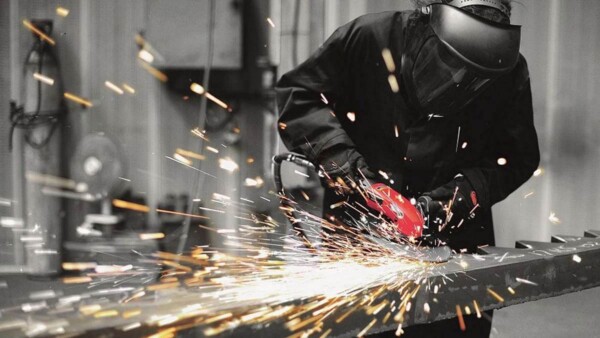Production and machining of metals: emitted pollutants and abatement systems
Abatement systems for fumes, oily mist and metal working dust

The production and machining of metals includes several operations that allow transformation of materials extracted from quarries (raw materials) into alloys and finished products.
These industrial processes involve the emission of specific harmful pollutants that must be collected and treated through special extraction and abatement systems.
Air pollution abatement systems deriving from the production and machining of metals
Metals are chemical elements found naturally in numerous minerals: once extracted, they are subjected to various processes (refining, melting, extrusion..) to obtain the semi-finished products that are sold to mechanical workshops. The latter carry out hot or cold machining to obtain finished products that are then sold on the market.
All these operations result in the emission of pollutants that quickly disperse into the environment and are harmful to workers. For this reason companies must:
- provide operators with special Personal Protective Equipment (PPE);
- equip themselves with special systems for the collection and abatement of pollutants emitted during metal working
Multiple abatement technologies can be used for this purpose and their application varies depending on the pollutants to process
Among the main substances emitted in the metallurgy and metal working sector, we have:
- oily mist resulting from the use of emulsifying oils during the cooling phases;
- fumes emitted during the casting and machining phases of metals;
- dust, explosive or not, resulting from specific machining on metals (grinding, sanding and similar)
Let’s take a look together at some applied cases in which Tecnosida® abatement systems solved some typical sector problems!
Welding fumes extraction and abatement
The production of some final products involves the use of welding, often combined with other operations such as cutting, lapping, grinding and similar. Depending on the processes carried out and the chemical and physical characteristics of the treated metals, the dust emitted during this process can be explosive. In this case, companies must equip themselves with extraction and abatement systems suitable for use in potentially explosive atmospheres (ATEX).
Discover the details of the ATEX system developed by Tecnosida® for the abatement of fumes and explosive dust emitted during aluminium cutting and welding!
Abatement scrubber for fumes from washing stainless steel sheets
Stainless steel is resistant to oxidation and corrosion and these characteristics make it suitable for use in different industrial contexts.
The production of stainless steel sheets includes several operations (polishing, washing with acid and basic reagents and similar) that involve the emission of VOC and fumes containing acid vapours.
These pollutants are treated through special wet abatement systems.
Dust treatment system for grinding and recovery of household appliances
As we have seen, the metalworking sector is very broad and includes many companies that carry out different processes.
These companies include those dealing with the recovery and recycling of components in computers, televisions, refrigerators and similar. The grinding operations of these products involve the emission of dust which, in the case of some metals (such as aluminium), can be explosive.
Oil mist treatment and filtration from metal quenching
Hardening is a heat treatment that is performed on metals to increase their surface hardness.
Like all thermal and chemical-thermal operations, the quenching process involves the emission of pollutants such as hot fumes and oily mists resulting from the immersion of the pieces in tanks containing oil.
For the abatement of oily vapours, it is necessary to apply a specific technology based on the physical principle of coalescence.
Explosive dust abatement system for special metal working
Metal fibres are used in the automotive industry and can be made of different materials. Their production includes several stages, including the grinding of the material used to make them.
This operation generates sparks and involves the emission of explosive dust. For this reason, it is necessary to design special abatement systems equipped with ATEX systems that can treat dust and prevent explosions and possible fires.
Calamine removal from steel pipe production
The metallurgy sector also has very special processes for which ad hoc solutions must be designed that adapt to the production process. One example is the production of stainless steel piping used in different production sectors.
At the end of the hot machining of the tube rods, before placing on the market calamine scale inside them must be removed.
Industrial extraction system and recovery of by-products from metal wool production
Metal wool is widely used in the construction and automotive sectors.
Its production disperses by-products into the environment that slow down the operators’ work as they have to continuously stop production to collect waste.
To avoid this situation, companies can equip themselves with special systems that convey the by-products to a single collection point and then recover them.
Abatement of fumes, VOC, oily mist and dust in the metallurgy and metal working sectors
Summing up, we can say that the many processes carried out in the metallurgy and metal working sector involve the emission of various types of pollutants that can be eliminated through different technologies.
In order to identify those most suited to the specific needs, it is necessary to rely on experts who can assess the state of affairs and design specific extraction and abatement systems.
Trust the experts: contact us for personalised support!